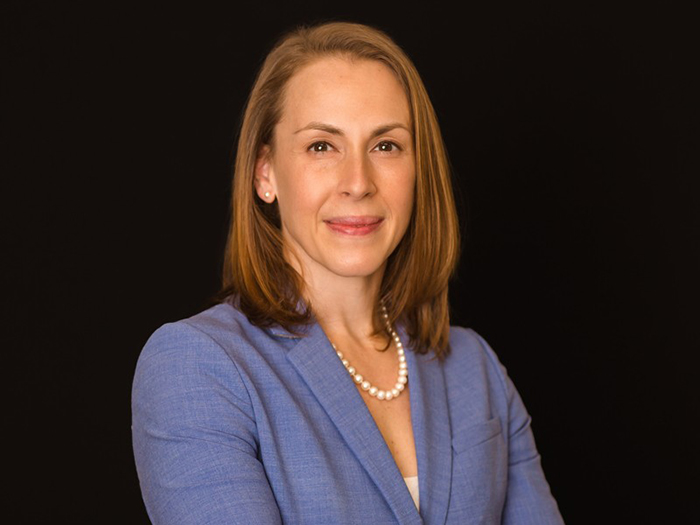Claims Adjusters Are the Future Leaders of Workers’ Comp: How Can We Nurture Their Success?

It is undisputed that the claims adjuster sits in the hot seat of the workers’ compensation claims process.
At the frontlines of claims management, they must balance the interests of multiple stakeholders while juggling important and often time-critical authorization decisions that impact an injured worker’s care in relation to their workers’ comp claim.
Add to this the unique complexity of the workers’ compensation system and patient populations — and it’s not a role for the faint of heart.
It’s also not a role that most enter as a first choice.
“My start in the industry was certainly not something I planned for,” said Stephanie Arkelian, former IAIABC Next Gen recipient and director of product management at Healthesystems.
“When the market crashed in 2008, I was left without a job. I took a chance on an adjusting position at a large TPA and proceeded to take on one of the most challenging roles of my professional career, working the frontlines for the largest retailer in the world. It taught me a tremendous amount that led to my current role, where I’ve worked passionately to affect real change for our clients and ultimately improve the experience for injured workers.”
At a time when many industries are facing recruitment challenges, attracting new professionals to workers’ compensation, and specifically the role of claims adjuster, has become increasingly difficult.
But the key to attracting — and ultimately retaining — new talent is multifold: Providing them with the tools and support to nurture in their new role, while taking a long-term view of how to support their success in the industry for years to come.
The Anatomy of a Future Leader
The frontline role of the claims adjuster is a prime place to focus attention when looking to develop future leaders in the workers’ compensation industry, as the qualities and knowledge base that set someone up for success in this position can also serve their long-term success.

Stephanie Arkelian, former IAIABC Next Gen recipient and director of product management, Healthesystems
“These individuals often make great future leaders as they gain a keen empathy from the day-to-day frontline experience, as well as an intimate understanding of the claims process — both of which help fuel the understanding needed to solve the problems and challenges our industry faces,” Arkelian explained.
Other skills and qualities that make these professionals formidable in the industry include strong communication skills across a variety of stakeholders, a foundational knowledge of medical information, and, of course, a true passion for affecting change.
“This isn’t a nine-to-five job that you clock in and out of,” Arkelian said.
“I remember nights worrying if I did everything I needed that day to make sure my injured workers got the right care authorized, scheduled and coordinated and all their proper payments issued. As an adjuster, you are an employee of an insurance company trying your best to be a great steward of finance and making the best compensability decisions, but you are also an important advocate for the injured worker.
“Looking at all the skills gained as an adjuster,” she continued, “it’s important for today’s workers’ compensation leadership to recognize the value of this, promote career paths from the adjusting role, and nurture the professional growth of our potential future leaders.”
Amping Up Industry Appeal
Insurance — and specifically workers’ compensation insurance — is not necessarily a sought-after career for many college graduates or new professionals entering the workforce. Many professionals, like Arkelian, ended up in the industry by happenstance.
But there are advantages that the industry can be touting to attract new talent.
“There are a lot of advantages for new professionals just getting their start if they consider this career path. This is a smaller industry, and once you are in and start gaining unique expertise in a very specific sector of health care and insurance, the value of that knowledge becomes something that can be leveraged to do many different things to rapidly grow careers within our space.”
And this growth can happen on unexpected and exciting paths, as demonstrated by Arkelian’s own successful transition to a product role at a national medical benefits manager.
But knowing what is potentially in front of them from the start may help improve recruitment and ultimately retainment of these professionals.
“I didn’t know at the time what signing up to be an adjuster really meant,” Arkelian explained. “I studied for my license, went through boot-camp style training and had a supportive mentor who helped guide me as I took on those first few claims. As my case load grew and more complexities piled on, I didn’t know if the significant time, dedication and sometimes tears were worth it. Was there a light at the end of the tunnel? There was, but at the time I couldn’t see it.
“I would say it is important that adjusters getting their start in our industry have potential career paths visible,” she advised. “The role is hard, but it can be rewarding knowing you are helping people through what can be their darkest hour. It’s important that our new talent can see the path forward.”
Technology that Supports, Not Stifles
In a time where we are accustomed to having next-generation applications at our fingertips for everything from managing financial health to ordering breakfast and streaming entertainment, a new adjuster’s introduction to claims technology can be a shock to the system.
“When they first sat me down for training in their claims system, I was surprised. The technology felt very outdated,” Arkelian said. “It was hard to get excited about working in it.”
But like the rest of the world and the rest of health care — workers’ compensation is evolving and innovating. It must — especially when it comes to supporting the needs of this demanding role through technology solutions.
“Adjusters often balance large caseloads, and while they may get high-level medical terminology and situational training, it’s hard to prepare someone for the critical decisions they will be making on a claim day in and day out and, most importantly, how these decisions impact the injured worker’s life and the lives of their family. It doesn’t help that they are often working in aged systems that can be frustratingly inefficient,” Arkelian added. “Often, they are working in multiple, disparate systems.
“We need to consider the unique challenges of this role and develop technology solutions that empower their day-to-day decision-making, reduce their burden and, importantly, meet the expectations of today’s users in terms of their experience.”
Understanding what claims adjusters really want and need out of the systems they are working in is exactly why Healthesystems embeds user feedback and research studies into their innovation pipeline. The insights directly inform enhancements to the company’s claims technology.
“It’s really all about ensuring we are incorporating the user’s voice into what we are building,” Arkelian explained.
“The insights from user feedback and formalized research studies allow us to ensure we are focused on the right things, building useful tools and doing our part to improve efficiencies and reduce stressors for the dedicated employees who are keeping the workers’ compensation world go round.
“Some of these professionals might be our next future leaders, and we want to make sure we are doing everything in our power to make their jobs successful and rewarding to hopefully maintain that talent in our industry for years to come.” &










